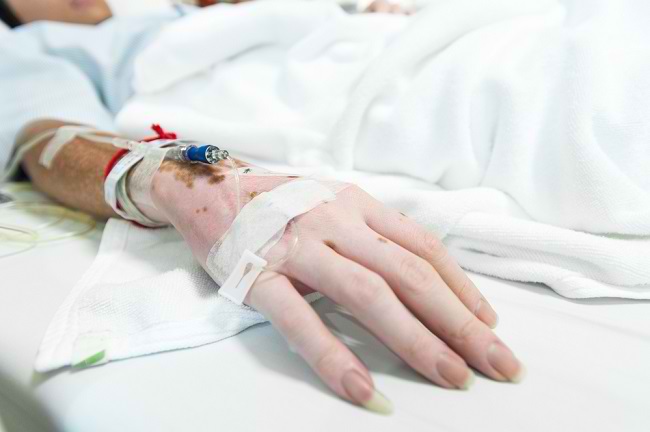Stem cell transplantation is a method of treatment to treat various diseases, such as cancer and degenerative diseases. Even so, the use of this method is still often debated regarding its safety and effectiveness.
Stem cells or stem cells is a term for cells that do not yet have a special function, so they can change, adapt, and reproduce depending on the location of the cell.

Because of these properties, stem cells are often used as transplant materials in medical treatment. Stem cell transplantation procedure is done by planting stem cells in certain organs of the body to replace cells damaged by a disease.
Types of Stem Cells and Their Use
In the body, stem cells will divide into other cells called daughter cells. Well, these daughter cells can be formed into two types, namely new stem cells and adult cells.
New stem cells are cells that will continue to multiply without special functions, while adult cells are cells that already have specific functions, such as brain cells, blood cells, and bone cells.
Research on stem cell function is still being carried out and developed. One of them is to replace cells damaged by certain diseases such as cancer, stroke, diabetes, and degenerative diseases such as osteoarthritis and Parkinson's disease. Stem cells can also be used as a treatment for plasma cell disease.
The existence of stem cells is expected to develop into mature cells and new tissues. In addition, stem cells are also used to determine the effectiveness and safety of a drug.
Multiple Sources of Stem Cells
Stem cells used for transplantation can come from several sources, namely:
1. Embryonic stem cells
These cells come from embryos that are 3-5 days old. At that time, the embryo usually only has about 150 cells. These cells have the potential to develop into more body cells than adult stem cells. Although more effective, embryonic stem cell extraction is still debatable from an ethical point of view.
2. Perinatal stem cells
These stem cells are obtained from the amniotic fluid or the fetal umbilical cord. The cell retrieval process is carried out during labor and can be stored for a while. Stem cell storage is done by freezing in the laboratory and can be used when children suffer from diseases caused by blood disorders, such as leukemia.
3. Adult stem cells
Obtained from small portions of body tissue, such as fat or bone marrow. Recent research has found that adult stem cells in certain parts of the body have the possibility of developing into cells of other parts of the body. For example, stem cells from the spinal cord can form heart muscle or bone cells.
4. Genetically engineered stem cells
With advances in biomolecular technology, adult cells can now be reshaped to resemble embryonic cells that have stem cell characteristics. These cells can divide into other stem cells or become specific cells in the body.
Stem Cell Transplant Method
Currently, stem cells have been used in bone marrow transplant procedures. In this method, stem cells are grown to replace cells damaged by chemotherapy and as a method to fight cancer cells, for example in leukemia.
There are two commonly used stem cell transplant methods. Determination of the method to be used depends on the age, needs of the patient, and the results of the doctor's examination. The following is an explanation of the two methods:
Autologous stem cell transplant
This transplant method uses stem cells that come from the patient's own body. The cells are then frozen, stored, and only used when the patient needs them, namely when the natural stem cells are damaged.
The advantage of the autologous transplant method is that the risk of stem cell rejection by the body is lower and there are fewer side effects. The formation of new blood also takes place more quickly.
However, the cancer cells suffered by the patient have not completely disappeared so they can be carried away by stem cells taken from the body. As a result, the transplant is at risk of failure, because stem cells can attack the body again when inserted.
Allogeneic stem cell transplant
This method uses donor stem cells, such as from volunteers or relatives. This transplant is usually used when the autologous transplant is unsuccessful or the disease is more aggressive.
The advantage of this transplant method is that the stem cells used are cancer-free, because they are taken from donors whose health has been confirmed.
However, allogeneic transplantation carries a greater risk of side effects and a slower recovery period, because the body can reject stem cells from donors. The formation of new blood is also known to occur more slowly.
Stem Cell Transplant Side Effects
Just like any other treatment procedure, stem cell transplantation also carries the risk of side effects and fatal complications.
Some patients may experience few side effects, while others may experience serious complications. The following are some of the risks that can arise:
- Irregular development of embryonic stem cells
- Infection
- Infertility
- The emergence of a new cancer
- Cataract
- Stem cell transplant failure
- Death
Other side effects are graft-versus-host disease, which is when the patient's immune system perceives the stem cells from the donor as foreign and rejects the cells.
This condition is generally characterized by symptoms such as nausea, vomiting, diarrhea, stomach cramps, canker sores, loss of appetite, organ damage, and jaundice..
Stem cell transplantation must be performed according to medical procedures and in a hospital that does provide this service. However, you need to be more vigilant, because there are still many transplant procedures that are not carried out by a competent party so that it can increase the risk of complications.
The following are things you need to know and pay attention to in choosing a good transplant provider:
- How long has the transplant service provider been operating?
- How many patients have you treated, especially patients with the same condition as you?
- Are the doctors in these services really competent in their fields?
- Do nurses in transplant providers have the skills to treat transplant patients?
- Is the transplant procedure in the service clear or not?
Until now, the benefits of stem cell therapy outweigh the risks that can occur are still a question and must be proven through medical research so that treatment does not risk harming patients.
If you have further questions about stem cell transplantation methods or want to use these methods to treat certain diseases, please do not hesitate to consult with your doctor.









